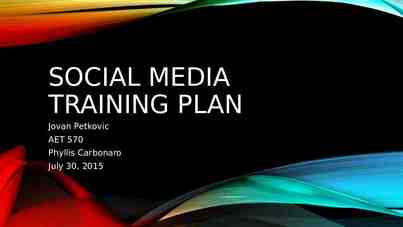History, Current Issues, Options: Medicaid and Medicare Ted Anagnoson
25 Slides174.15 KB
History, Current Issues, Options: Medicaid and Medicare Ted Anagnoson October 2005
Medicaid (Medi-Cal in CA) Largest public insurance program for low income people Fills in holes – 39 m children and parents, low income 8 m persons with disabilities 6 m low-income Medicare beneficiaries Financed jointly by the feds (57%) and the states, by formula based in state income 02/19/2024 2
States administer MA within broad federal guidelines – participation voluntary 56 different programs Services purchased thru private health sector – thru FFS or managed care Federal waivers available – “1115 waivers” MA evolved – managed care, disease mgt., home and community based LTC 02/19/2024 3
Medicaid: Who 1. 2. 3. Income requirement Asset requirement Must fit into a category-CA, 40 cats “Mandatory” popula-tions: pregnant women & kids under 6 with incomes 133% of 02/19/2024 poverty line, “Optional” populations: Persons with disabilities Seniors up to 100% of FPL “Medically needy” Nursing home residents with incomes up to 300% of SSI limits, 4 more .
Medicaid: Who, Continued 30 m low income children and parents, 2/3 of which are in working families 25 m kids, 1 in 4 children. Plus SCHIP w/ 4 m additional low-income children. MA pays for 1/3 of all births Largest source of public funding for family planning Primary source of coverage for 8 m low income Americans with disabilities and chronic illnesses 02/19/2024 5
Medicaid: Significance An “entitlement” program for both the states and for low income individuals MA enrollees: Much poorer than the general population Markedly worse health than the general population Most enrollees’ employers don’t offer HI Many low income people don’t qualify 14 states: parents must be 50% of FPL Adults without kids (not disabled) do not qualify Immigrants – only ER for 5 years. 02/19/2024 Undocumented: ER only. 6
Medicaid Services 12 required; 30 optional (CA has 28) Scope of benefits varies across states States can limit MD visits or drugs they cover MA is the major source of LTC services 10 m Americans need LTC MA pays 40% of the 151 b spent on LTC MA is the major source for mental health and substance abuse for low income people States can impose nominal co-payments for services 02/19/2024 7
Medicaid’s Costs 300 b in FY 2004, 90% for services. Relatively low cost per person, once you consider health status of MA bennies Spending (FY 03) Children: Disabled: 1,700 -Adults: 1,800 12,300 -Seniors: 12,800 Adults and children are 75% of bennies, but cost only 31% of the total. Seniors/disabled are 25% of the beneficiaries, but use 60% of the funds 02/19/2024 8
02/19/2024 9
Medicaid reform is on the agenda Congressional demand to cut 10 b over 5 yrs. Responses: Secretary’s Medicaid Commission National Governors Association (NGA) National Conference of State Legislatures (NCSL) Context: Dramatic decline in state revenues 2001-2005 High MA cost growth – enrollment & 02/19/2024health 10
Practical reforms Pay drug companies less for their drugs Currently: discount off Avg Wholesale Price (AWP) Alternative: Avg. Mfgs Price (AMP) or Avg. Sales Price Asset transfer restrictions Now: 2,000 in assets allowed, excluding home, 1 car, life insurance 1,500, and misc. 02/19/2024 Community spouses have special rules 11
More Medicaid reforms . Premiums and cost-sharing Now: states can’t charge premiums Proposed: higher co-pays and premiums for some groups, tiered co-pays for drugs Make not paying co-pays “enforceable” – no pay, no service Allow states to cut “optional” services Optional eligibility groups: very poor 02/19/2024 seniors, disabled adults . 12
Optional services: prescription drugs, clinic services, dental, vision, prosthetic devices, PT, TB-related services, nursing facilities ( 21 years old), intermediate care facilities/individuals with mental retardation, home and community-based care, respiratory care for those who are ventilator dependent, personal care, hospice services Many of these are important to seniors and disabled individuals Proposals: vary services for diff populations More limited package for some groups BUT – either you cut adults/kids deeply 13 02/19/2024
02/19/2024 14
Medicaid reform – only 5 ways 1. 2. 3. 4. 5. Curtail services Buy services more cheaply or use them more efficiently Private LTC insurance Reduce fraud Shift costs to the states 02/19/2024 Change from open-ended entitlement program to block grant. Governors unanimously opposed! 15
Medicare The world’s 2nd largest HI program – next to Medicaid: 41m seniors and disabled persons (2003) Admin. cost: 2%-3% of program expenditures Established in 1965, along with Medicaid Incredible complexity . Politically – more difficult than SS. Why? 02/19/2024 16
The Program A: Hospital Insurance (HI) – inpatient short-term SNFs, HH, Hospice B: Supplementary Medical Insurance (SMI) – doctors, outpatient hospital services, HH not in A, tests, DME, ambulances C: Medicare Advantage – was Medicare Choice – HMO, other options 02/19/2024 17
Eligibility A: everyone with 40 quarters of “insurance” with SS. Disabled on SSDI for 2 years. ESRD B: voluntary, but 95% of those on A are in. Costs 78.20 in 2005 per month C: voluntary, replaces A and B (1115% of the population) D: voluntary 02/19/2024 18
History 1965-enacted 1972-eligibility extended to SSDI recipients and ESRD persons 1982 – managed care plans (HMOs) could participate with risk-based option (not FFS) 1983 – inpatient hospital prospective payment system introduced 1988 – Medicare Catastrophic Coverage Act 02/19/2024 19
History 1989 – MCCA repealed! 1997 – Balanced Budget Act of 1997: Establishes Part C as Medicare Choice New payment systems (HH prospective pmt) R&D for other approaches (PPO) Expanded preventive benefits (mammograms) 2003 – Medicare Modernization Act 02/19/2024 20
Patterns 24% - A, B, Medigap plan 33% - A, B, employer supplemental plan 11% - A, B Medicaid – (the “dual eligibles” 17% - MR Choice ( HMOs, MR-HSAs) 12% - A, B old Fee For Service (FFS) 2% - “other public” (military .) 100% - Total 34.6m noninstitutionalized MR beneficiaries . 02/19/2024 21
What’s right with Medicare Covers millions who would not have health insurance otherwise Improves quality of life for them Popular Controls costs better than the private sector Administrative costs are low Supports teaching hospitals, urban/rural hospitals, isolated hospitals 02/19/2024 22
What’s wrong with Medicare Benefits limited, but a lot better than 1997 HI trust fund will run short in 2030 Reforms needed to accommodate baby boom Some MR spending is wasted Costs increasing faster than economic growth 02/19/2024 23
Reforms Increased age of eligibility Increased cost sharing 02/19/2024 Relate premiums to beneficiary income Increase revenues through payroll tax Defined contribution plan – no standard benefit package Premium support – w/standardized benefit package – like Federal employee plan 24
Expanding coverage Drug benefit – expand it? Allow those 55-64 to buy in Long-term care benefit 02/19/2024 25






























